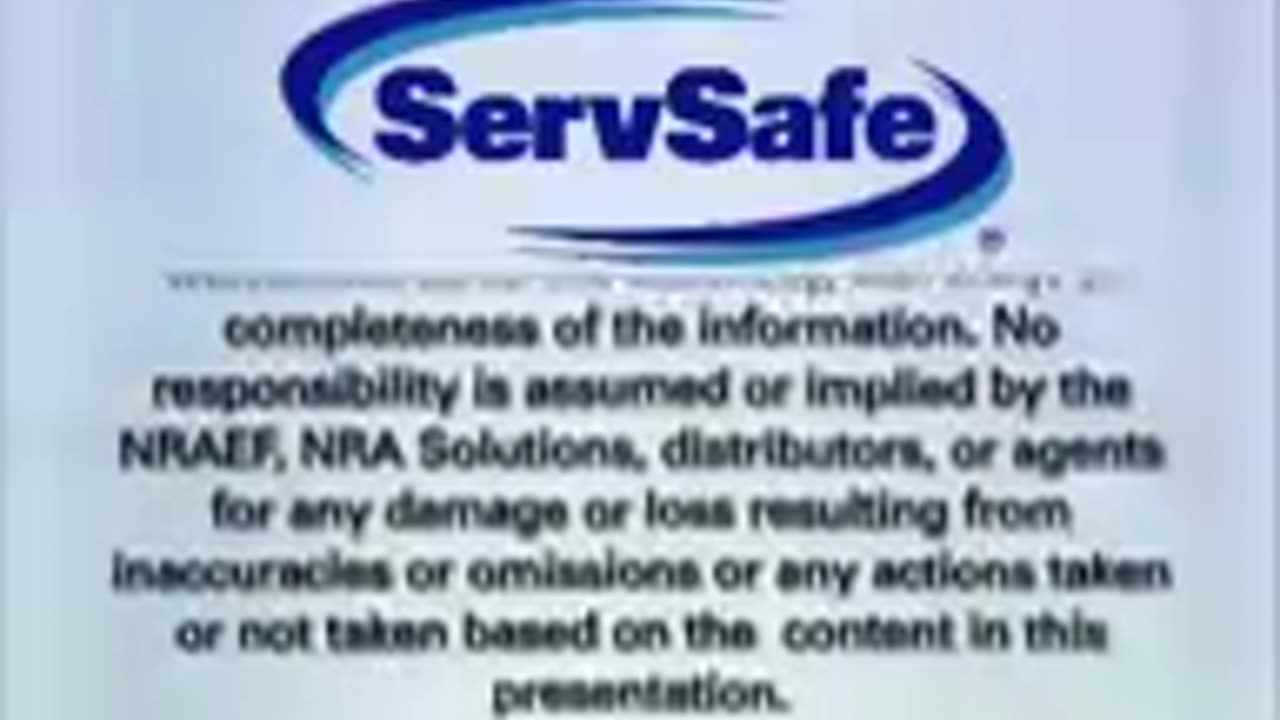Premium Only Content

SS 1 Introduction to Food Safety
Here’s an outline for **"SS 1: Introduction to Food Safety"**, which could be used as part of a training program for food safety awareness. Let me know if you’d like any specific details or additions.
---
## **SS 1: Introduction to Food Safety**
**Purpose:**
To provide foundational knowledge on food safety, its importance, and key practices to ensure the safety of food from production to consumption.
---
### **1. What is Food Safety?**
- **Definition:** Food safety refers to the practices and conditions necessary to ensure that food is safe for consumption and free from contamination that could cause illness or harm.
- **Key Goal:** Prevent foodborne illnesses and ensure consumer trust in the food supply chain.
---
### **2. Why is Food Safety Important?**
- **Health Protection:** Prevents foodborne illnesses caused by harmful bacteria, viruses, parasites, or chemicals.
- **Economic Impact:** Reduces costs associated with recalls, waste, and healthcare.
- **Legal Compliance:** Meets local, national, and international food safety regulations.
- **Consumer Trust:** Builds confidence in food producers, handlers, and businesses.
---
### **3. Foodborne Illnesses: An Overview**
- **What Are Foodborne Illnesses?**
- Diseases caused by consuming contaminated food.
- **Common Causes:**
- Biological: Bacteria (e.g., Salmonella, E. coli), viruses (e.g., Norovirus), parasites.
- Chemical: Pesticides, cleaning agents, food additives.
- Physical: Foreign objects like glass, metal, or plastic.
- **Impact of Foodborne Illnesses:**
- Mild symptoms: Nausea, vomiting, diarrhea.
- Severe consequences: Hospitalization, long-term health issues, or death.
---
### **4. Key Concepts in Food Safety**
#### **a. The Food Safety Chain**
- Food safety is a shared responsibility among farmers, processors, distributors, retailers, and consumers.
#### **b. The 4 Cs of Food Safety:**
1. **Clean:** Proper hygiene and sanitation practices.
2. **Cook:** Cooking food to safe internal temperatures.
3. **Chill:** Proper storage and refrigeration of perishable items.
4. **Cross-Contamination:** Preventing the spread of harmful substances between foods, surfaces, and utensils.
---
### **5. Common Food Safety Hazards**
- **Biological Hazards:**
- Harmful microorganisms (bacteria, viruses, fungi, parasites).
- **Chemical Hazards:**
- Naturally occurring toxins (e.g., in certain plants or seafood).
- Contaminants introduced during food production (e.g., pesticides, heavy metals).
- **Physical Hazards:**
- Foreign objects like stones, bones, or shards of glass.
---
### **6. Food Safety Regulations and Standards**
- Introduction to major food safety laws and standards (e.g., HACCP, FSMA, Codex Alimentarius).
- Importance of compliance to avoid legal penalties and maintain public safety.
---
### **7. The Role of Food Handlers**
- **Responsibilities:**
- Ensuring personal hygiene (e.g., proper handwashing).
- Using safe food handling practices (e.g., avoiding cross-contact of allergens).
- Being vigilant for signs of food spoilage or contamination.
---
### **8. Case Studies and Real-World Examples**
- Discuss notable incidents of foodborne illnesses or contamination.
- Lessons learned and preventive measures implemented.
---
### **9. Knowledge Check**
- Include a short quiz or reflection questions to test understanding of the module.
---
### **10. Key Takeaway Message:**
**"Food safety starts with awareness—every step in the chain matters!"**
Would you like me to expand any section, include slides, or create printable materials for this module?
-
 6:43
6:43
HSESafetyInformation
6 months agoLahori Chanay Recipe - Lahori Cholay Recipe - Chana Chana Masala
55 -
 LIVE
LIVE
Welcome to the Rebellion Podcast
18 hours agoMonday Funday - WTTR Podcast Live 8/25
485 watching -
 LIVE
LIVE
Game On!
14 hours agoTom Brady And The Las Vegas Raiders ARE BACK! 2025 NFL Preview!
5,784 watching -
 LIVE
LIVE
The Bubba Army
2 days agoShould RaJa Jackson Be Arrested? - Bubba the Love Sponge® Show | 8/25/25
2,776 watching -
 LIVE
LIVE
FyrBorne
13 hours ago🔴Warzone M&K Sniping: Builds So Strong They Think I'm Hacking
427 watching -
 LIVE
LIVE
BEK TV
2 days agoTrent Loos in the Morning - 8/25/2025
1,288 watching -
 4:23
4:23
Blackstone Griddles
16 hours agoEasy Salmon Dinner on the Blackstone Griddle
27.3K1 -
 8:10
8:10
WhaddoYouMeme
1 day ago $0.06 earnedChristians, Before You See “Testament”, Watch this!
7.36K4 -
 8:42
8:42
Freedom Frontline
15 hours agoDurbin’s Trump Smear Video Just HUMILIATED Him in the Senate
9.21K4 -
 10:56
10:56
ariellescarcella
12 hours agoThe Shocking Divide Among College Voters Sparks Worry For America
7.57K6